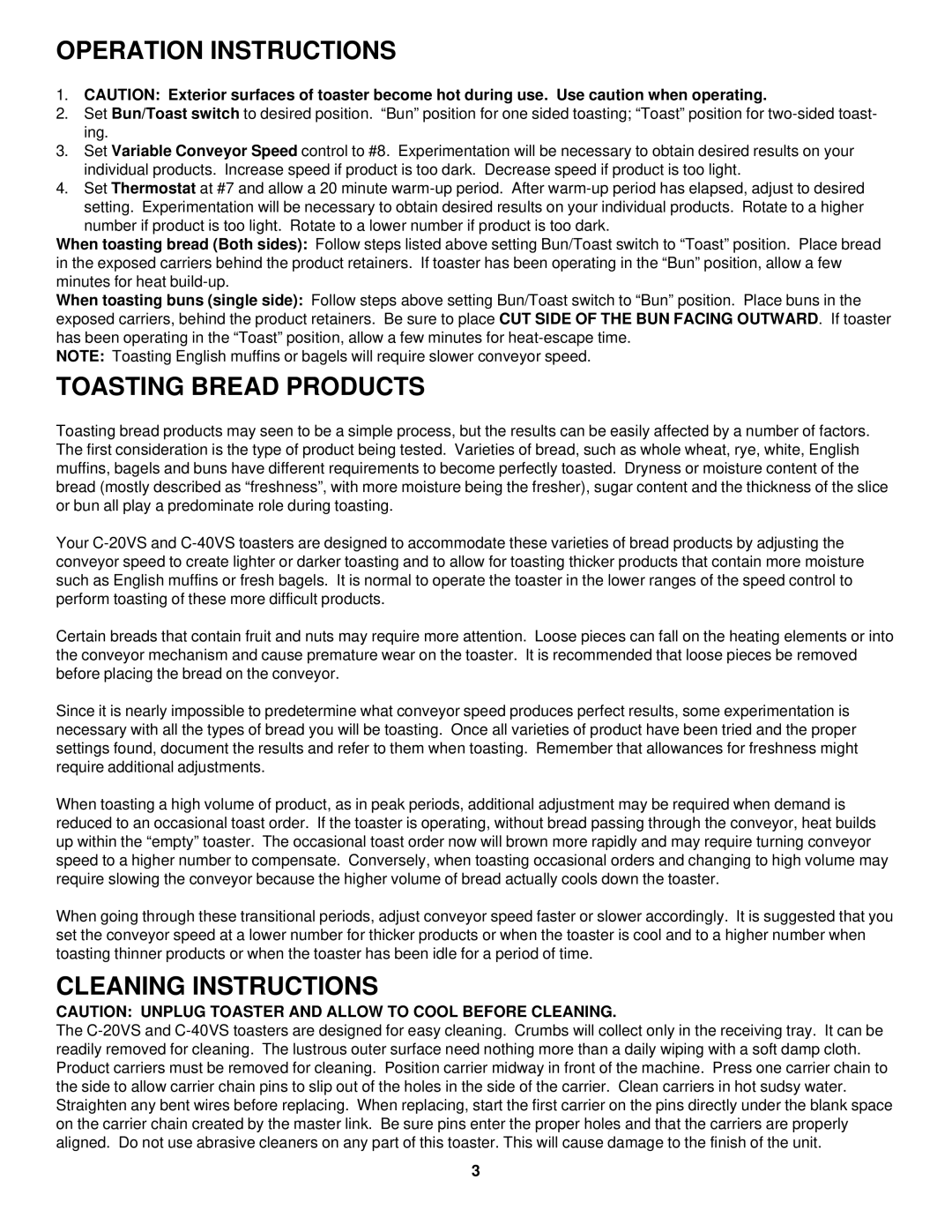C-20VS, C-40VS specifications
The Merco Savory C-20VS and C-40VS are two advanced cooking appliances designed for commercial kitchens, ideal for operations requiring high-quality food preparation and efficient service. Both models integrate sleek design with innovative technology, ensuring consistent results and maximizing productivity in busy environments.The C-20VS features a compact design suitable for smaller kitchens or limited spaces. It boasts a cooking capacity that allows chefs to prepare a variety of dishes, making it an excellent fit for cafes, bistros, and food trucks. Key features include a simple user interface, programmable digital controls, and multiple cooking options, including baking, roasting, and broiling. The C-20VS also comes with a built-in temperature probe, ensuring precise cooking temperatures are maintained for optimal food safety and quality.
In contrast, the C-40VS is designed for larger operations with higher volume needs, featuring an expanded cooking chamber that can accommodate bigger batches of food. Its robust construction and enhanced ventilation system ensure even heat distribution, eliminating cold spots and ensuring every dish cooks uniformly. This model also supports multi-tier cooking with adjustable racks, enabling operators to cook different items simultaneously without mixing flavors.
Both models utilize advanced technologies such as energy-efficient heating elements and smart sensor systems that monitor cooking progress. This not only enhances performance but also reduces energy consumption, making both units environmentally friendly. The intuitive digital touchscreen on both models simplifies operation, allowing kitchen staff to quickly select cooking modes and adjust settings with ease.
Furthermore, cleaning is a breeze with the stainless steel construction, designed to withstand the rigors of a commercial kitchen while maintaining an attractive appearance. The removable components and accessible surfaces facilitate quick cleaning and maintenance, ensuring the units remain in top working condition.
In summary, the Merco Savory C-20VS and C-40VS are versatile, efficient, and user-friendly appliances that cater to the dynamic needs of modern commercial kitchens. Their combination of innovative features and thoughtful design makes them essential tools for any food service operation looking to enhance productivity and deliver exceptional culinary results.
